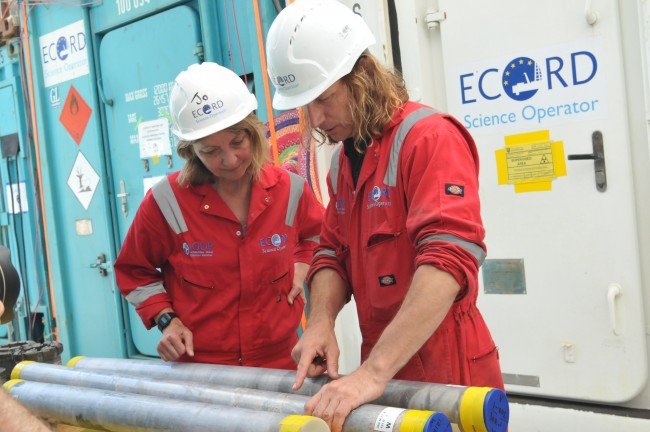Dino-Killing Asteroid Made Rocks Behave Like Liquid
November 20, 2017

When the asteroid that wiped out the dinosaurs slammed into the Earth 66 million years ago, solid rock flowed like a fluid.
The finding was revealed by examining cores taken from the Chicxulub crater during a scientific drilling mission led by the Jackson School of Geosciences and Imperial College London in spring 2016.
The results were published in the journal Science in November 2016.
The research validates the theory that asteroid impacts cause the surface of planets to behave like a fluid, said study author Sean Gulick, a research professor at the University of Texas Institute for Geophysics (UTIG). It also puts a definitive end to an alternative explanation that suggested that such impacts, which are common on other planets and moons, deform the surface by melting most of the rock around the impact.
“It is the same exact kind of feature that we see on all large impacts on rocky planets, whether it be on Venus, on Mercury or on the moon,” said Gulick, who was the expedition’s coprincipal investigator.
The team took core samples of the peak ring, which is now covered by water and the limestone of the modern Gulf floor.
They found that the asteroid, which hit with the force of 10 billion atomic bombs, quickly opened a massive hole nearly 19 miles deep and 120 miles wide.
Gulick said he knew they had solved the mystery of how large impacts affect the surface when the cores revealed an unmistakable pink granite, which is found deeper in the Earth, as opposed to the limestone that was present at the time of the impact.
Researchers found that the roughly 10-mile-wide Chicxulub asteroid, which hit in the Gulf of Mexico near the Yucatán Peninsula, pushed rock up from six miles below the surface to form the peak ring.
Those rocks travelled approximately 20 miles in a few minutes, first being pushed outward from the impact, then rebounding upward above the Earth’s surface and finally collapsing outward to form a ring of peaks around the center of the impact.
The expedition was conducted by the European Consortium for Ocean Research Drilling as part of the International Ocean Discovery Program and was supported by the International Continental Scientific Drilling Program. The Yucatán Government, Mexican federal government agencies, and scientists from the National Autonomous University of Mexico and the Yucatan Center for Scientific Research also supported the expedition.
Back to the Newsletter